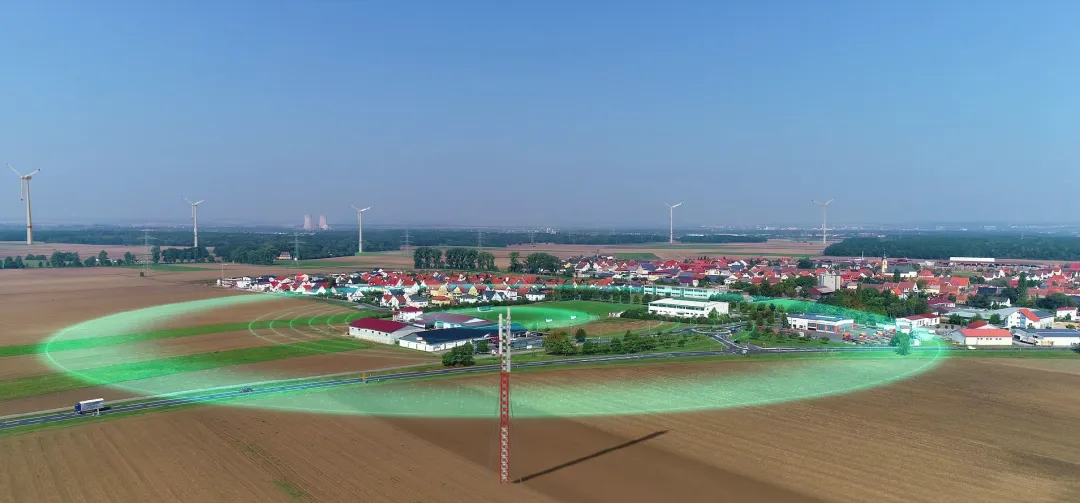Smart Rural 27: outcomes and recommendations
The final report of the Smart Rural 27 project clearly underlines the importance of LEADER as the main tool to implement Smart Villages in many Member States.

The 2nd Preparatory Action on Smart Rural Areas in the 21st Century - branded as Smart Rural 27 - was launched by the European Commission in December 2020. It aims to prepare Member States and rural communities for the implementation of Smart Villages within the Common Agricultural Policy (CAP) post-2020, as well as other EU policies and initiatives which could potentially support the emergence of additional Smart Villages across the European Union.
The final report of the Smart Rural 27 project, released at the end of January 2025, summarises the main findings of the project, which clearly underline the importance of LEADER as the main tool to implement Smart Villages in many Member States.
Smart Villages and LEADER: main recommendations
The project recommendations revolve around four main areas: capacity-building and awareness-raising, improvements to the policy framework, calling for multi-funding approaches, and continuing the Smart Villages Observatory. LEADER's role is mentioned across all the recommendations.
Continued capacity-building and awareness-raising on Smart Villages
The report notes the need for continued direct support for rural communities to develop Smart Village strategies and implement smart projects. Practical peer-to-peer exchanges, especially field visits, are particularly appreciated by the stakeholders. Clear communication and knowledge sharing are key to effective awareness-raising, communication and implementation of Smart Villages, and LEADER LAGs should be targeted with dedicated communication about Smart Villages.
Improving the policy framework for Smart Villages
According to the report, the implementation of Smart Villages CAP interventions needs to be closely followed and monitored. In addition, knowledge needs to be shared to facilitate peer-to-peer learning, as further guidance is needed in Member States in parallel to the design of calls. Sharing the experience of the countries where dedicated interventions are included in the CAP Strategic Plans (CSPs) would be particularly useful.
The project found that, in general, there is no additional funding provided for Smart Villages implementation for LEADER LAGs that include Smart Villages in their Local Development Strategies (LDSs), although this is an option that could still be considered by Member States. Further efforts could be invested in the effective support of Smart Villages within LEADER, in particular, awareness-raising about Smart Villages, capacity-building for LAGs, information exchange among LAGs on relevant practices, and monitoring Smart Villages' progress in the LDSs. The report also suggests that in the future CAP Regulation, the European Commission should consider making it a specific task of LEADER LAGs to support local municipalities to become smart villages.

Call for multi-funded Smart Villages
Smart Villages is a multi-funded concept. However, currently, it is only formally and explicitly programmed through the CAP Regulation. Policy analysis carried out by Smart Rural 27 showed that no other dedicated interventions within other EU programmes seem to directly support Smart Villages.
Funds other than the CAP could, and should, be engaged to support Smart Villages (as set out in the initial Action Plan for Smart Villages by the EU in 2017), e.g. through dedicated inter-ministerial taskforces or thematic groups. Overall, the report notes, there should be stronger requirements, guidance and incentives from the European Commission towards Managing Authorities – especially of Cohesion Policy – to allocate more funding and support to community-led local approaches, such as LEADER and Smart Villages, in the CAP Strategic Plans and other EU programmes.
Other useful references
The Smart Rural 27 project had four objectives:
- provide and share knowledge and know-how on Smart Villages;
- inform and improve the development of CAP Strategic Plans (and other policy) implementation;
- facilitate the implementation of Smart Village strategies; and
- set up and promote lighthouse examples for effective programming.
In order to achieve the above objectives, the project developed a series of tasks and activities supporting both the ‘on-the-ground’ implementation of Smart Villages and the development of Smart Villages policies.
Notably useful tools produced by Smart Rural 27 include a geomapping tool and an analysis of the support to Smart Villages in the CSPs of 2023-2027, which includes both detailed factsheets for each Member State and a synthesis report. In addition, the project set up the Pilot European Smart Villages Observatory.
If you are interested in LEADER and Smart Villages, our news article about the LAG calls in three countries includes interesting insights on Italy, where LEADER is being used to support Smart Villages implementation and on Austria.